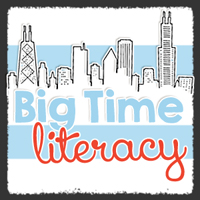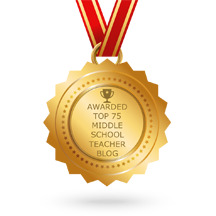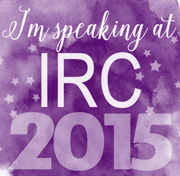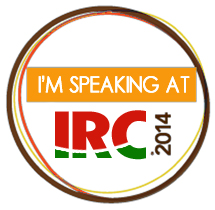I'm so excited! Some reading specialist and literacy coach bloggers asked me to be a part of their blog hop....so here I am! Love blogging world!
Clicking and Clunking
Part of being a great reader involves being able to figure out unknown words in context. Good readers are like detectives who use all the clues they can find in the text to determine meaning of unknown words. Here's a great strategy to use to teach kids how to find unknown words and then how to figure out what they mean.
First, you start with the metaphor of clicking and clunking. You ask students to picture themselves at a fancy party - like a wedding or a quinceañera or any other party they would be dressed up for. Tell students to take note of the shoes they're wearing, and how they click-click-click across the tile floor as they walk and dance.
Explain to the kids that as they are dancing, they are clicking through the party and having a fun time. When we read, and we're understanding the text, we are clicking through it. Click, click, click - I get it - It makes sense - I understand the text!
Now, back to the party - Explain that you are having so much fun dancing with family and friends that you don't notice the wall there, and Clunk! You hit it!
Well, in reading, you clunk when you come to a word, or a phrase, or even a whole part of the text that gets you confused. "Clunk Words" in my class are unknown words. After my students get the hang of this, they will tell me all the time what their clunk words are or the places that they clunked. Identifying them are only half the battle. After kids can identify them, you have to give them tools to figure them out.
I made a little organizer for my middle school students to use:
After I taught students how to "click" and "clunk," I then had to go on to give them a mini-lesson on connotation and a review on parts of speech. The key here is that they need to try and come up with a synonym, without looking the word up in the dictionary. They also should substitute it to see if it sounds right. After I taught this strategy to kids, they would do two clunk words from their Just Right books each week, in addition to all the other strategy work I required. I would change up the color of the papers because those middle school kiddos are pretty savvy and will try and reuse them...but with status of the class it's almost impossible to fool Brezek!
You can find this as a freebie in my Teachers Pay Teachers store. It will be free during the blog hop (October 25-27), and then it will be a paid item. Hope you can find a way to use it with your students!
Now that you've learned about Clunk Words, you're ready for my clue. On your form, you can record the letter...
First, you start with the metaphor of clicking and clunking. You ask students to picture themselves at a fancy party - like a wedding or a quinceañera or any other party they would be dressed up for. Tell students to take note of the shoes they're wearing, and how they click-click-click across the tile floor as they walk and dance.
Explain to the kids that as they are dancing, they are clicking through the party and having a fun time. When we read, and we're understanding the text, we are clicking through it. Click, click, click - I get it - It makes sense - I understand the text!
Now, back to the party - Explain that you are having so much fun dancing with family and friends that you don't notice the wall there, and Clunk! You hit it!
Well, in reading, you clunk when you come to a word, or a phrase, or even a whole part of the text that gets you confused. "Clunk Words" in my class are unknown words. After my students get the hang of this, they will tell me all the time what their clunk words are or the places that they clunked. Identifying them are only half the battle. After kids can identify them, you have to give them tools to figure them out.
I made a little organizer for my middle school students to use:
After I taught students how to "click" and "clunk," I then had to go on to give them a mini-lesson on connotation and a review on parts of speech. The key here is that they need to try and come up with a synonym, without looking the word up in the dictionary. They also should substitute it to see if it sounds right. After I taught this strategy to kids, they would do two clunk words from their Just Right books each week, in addition to all the other strategy work I required. I would change up the color of the papers because those middle school kiddos are pretty savvy and will try and reuse them...but with status of the class it's almost impossible to fool Brezek!
You can find this as a freebie in my Teachers Pay Teachers store. It will be free during the blog hop (October 25-27), and then it will be a paid item. Hope you can find a way to use it with your students!
Now that you've learned about Clunk Words, you're ready for my clue. On your form, you can record the letter...
Thanks for stopping by BigTime Literacy today! I hope you can see the value in the clicking and clunking lesson as much as I do! If you'd like to hear more about the work I do with teachers on my campus or stay up-to-date with future events, don't be shy! Click the Bloglovin or Google Friends button to follow my blog. I hope to have you back here again, but for now, you're onto the next stop on the hop!
Have a great weekend!
This reading strategy and strategy organizer are based on the following reference:
Klinger, J. (1999). Promoting reading comprehension, content learning, and English acquisition through collaborative strategic reading (CSR). The Reading Teacher, 52(7), 738-747.


















































